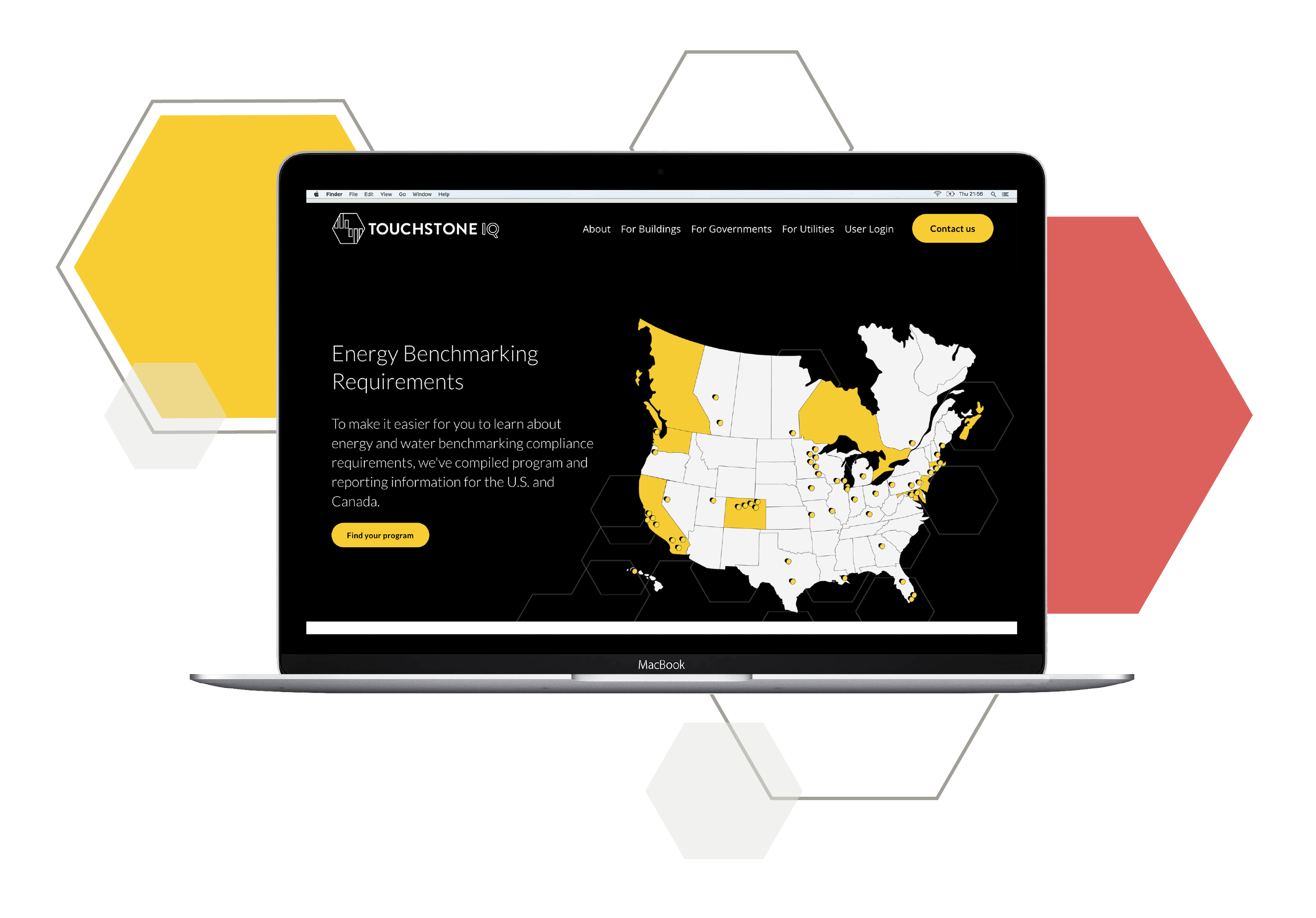
Understanding Energy Benchmarking for Buildings
Several local U.S. governments as well as Canadian provinces have adopted energy benchmarking, transparency, and labeling policies that require large buildings with certain square footage to assess their properties’ annual energy usage and provide transparent reporting to the public. There are many interested members of the public including municipalities, potential buyers, tenants, energy service vendors, utilities, and independent researchers in addition to property owners themselves when it comes to building benchmarking. The purpose of these energy policies is also to help inform property owners and managers about their buildings’ energy usage, allowing them to prioritize energy-saving improvements and create better-informed practices. In 2008, Austin, TX, and Washington, D.C. were the first two U.S. jurisdictions that established building energy benchmarking and transparency laws. As this is becoming a common practice among several locales differing at the state, province, county, and city level, it’s a great time for property owners to become acquainted with these regulations and see how they’re impacted.
What is building energy benchmarking?
Building energy benchmarking is the process of measuring a building’s energy use and comparing it to the energy use of similar buildings. It involves collecting and analyzing data on a building’s energy consumption, as well as its physical and operational characteristics to determine how efficiently it is using energy.
Energy benchmarking can be understood using the analogy of miles per gallon (MPG) ratings for cars. In the same way that a car's MPG rating is determined by measuring how much fuel it uses to travel a certain distance, energy benchmarking measures how much energy a building uses to perform various functions, such as heating, cooling, lighting, and running appliances.
Just like how a car's MPG rating can be compared to other cars in the same class to see which one is more fuel-efficient, energy benchmarking allows for the comparison of the energy use of different buildings in the same category, such as office buildings or multifamily residential buildings.
Using this analogy, we can see that just as a car with a lower MPG rating uses more fuel and costs more money to operate, a building with higher energy use consumes more energy and costs more money to operate. By using energy benchmarking, building owners and operators can identify areas where energy use can be reduced and implement energy-saving measures, just as car owners can improve fuel efficiency by reducing idling time, keeping tires properly inflated, or driving at moderate speeds.
Benchmarking a building can provide several benefits to building owners, including:
Cost savings: By benchmarking a building's energy usage, building owners can identify opportunities to reduce energy consumption and save money on energy bills. This can help reduce operating costs and increase the building's profitability over the long term.
Improved property value: Buildings with high energy efficiency ratings are more attractive to potential buyers or tenants, as they offer lower operating costs and a more comfortable environment. This can help improve the property's value and increase demand for the building.
Compliance with regulations: Many jurisdictions now require building owners to benchmark their buildings and report energy usage data. By complying with these regulations, building owners can avoid fines and penalties and demonstrate their commitment to sustainability and environmental responsibility.
Increased tenant satisfaction: Buildings with high energy efficiency ratings offer a more comfortable and healthier indoor environment, which can help increase tenant satisfaction and retention. This can also help attract new tenants and reduce vacancies.
Improved reputation: Building owners that benchmark their buildings and implement energy-saving measures can improve their reputation as responsible and sustainable businesses. This can help attract customers, investors, and employees that value environmental stewardship.
What are energy benchmarking laws and transparency ordinances?
Governments are adopting energy benchmarking and transparency laws to encourage building owners to use energy more efficiently and reduce their energy costs.
As mentioned above, energy benchmarking allows building owners to compare their energy usage with similar buildings and identify areas where they can save energy and reduce costs. Many governments now require building owners to complete and submit energy benchmarking reports for their buildings.
Transparency laws require building owners to publicly disclose their energy usage, which increases awareness of the importance of energy efficiency and encourages building owners to take steps to improve their building's energy performance. This information can also help potential buyers or renters make informed decisions about a building's energy performance. Many jurisdictions release building owners’ benchmarking data on downloadable spreadsheets or publicly accessible maps.
By reducing energy usage, buildings can help reduce greenhouse gas emissions and combat climate change, as well as save money on energy costs. Therefore, governments are promoting energy benchmarking and transparency laws to help building owners take steps to improve energy efficiency and reduce their environmental impact.
There are over 60 jurisdictions in the U.S., including state, county, and city governments, that have benchmarking and transparency laws on the books. This includes key real estate markets such as New York City, Boston, Washington, D.C., Miami, Chicago, Denver, Los Angeles, San Francisco, Seattle, and the states of California, Colorado, and Washington. See our benchmarking compliance guide for a summary of each of these laws’ requirements.
What types of buildings are required to comply with benchmarking laws?
Benchmarking laws most often apply to the largest buildings within a jurisdiction. Most benchmarking laws do not apply to buildings smaller than 25,000 or 50,000 square feet. The specific types of buildings that are required to comply with benchmarking laws vary depending on the jurisdiction, but common types include:
Commercial buildings: This includes office buildings, retail stores, hotels, and other non-residential buildings used for commercial purposes.
Multifamily residential buildings: This includes apartment buildings with five or more units that are larger than the law’s size threshold.
Light industrial buildings: This includes factories, warehouses, and other buildings used for light industrial purposes. Buildings that house heavy industry for which the vast majority of energy is consumed for industrial processes are typically not covered by benchmarking laws.
Government buildings: This includes buildings owned or leased by government entities. Notably, a jurisdiction does not have the authority to require buildings owned by a higher level of government to benchmark. For example, a city government cannot require buildings owned by the state or federal government to benchmark.
Educational buildings: This includes K-12 schools and colleges and universities.
Healthcare buildings: This includes hospitals, clinics, and other healthcare facilities.
When and how often do building owners need to comply with benchmarking laws?
All benchmarking laws require owners of covered buildings to report their benchmarking data annually, typically in the spring or early summer; however, the specific reporting deadline differs according to the jurisdiction.
Here are some examples of compliance schedules for energy benchmarking laws in different jurisdictions:
Chicago: Building owners are required to submit annual energy benchmarking reports for buildings over 50,000 square feet by June 1st of each year.
Denver: Building owners are required to submit annual energy benchmarking reports for buildings over 25,000 square feet by June 1st of each year.
New York City: Building owners are required to submit annual energy benchmarking reports for buildings over 25,000 square feet by May 1st of each year.
Seattle: Building owners are required to submit annual energy benchmarking reports for buildings over 10,000 square feet by April 1st of each year.
San Francisco: Building owners are required to submit annual energy benchmarking reports for buildings over 50,000 square feet by April 1st of each year.
You can find deadlines for all U.S. benchmarking laws on our compliance page.
What are the penalties for noncompliance with building energy benchmarking laws?
The penalties for violating energy benchmarking laws can vary depending on the jurisdiction and the specific violation. In general, penalties for non-compliance can include fines and/or other penalties, such as restrictions on building occupancy or the ability to conduct certain types of business.
Here are some examples of penalties for violating energy benchmarking laws in different jurisdictions:
New York City: Building owners who fail to comply with energy benchmarking requirements may be subject to a fine of up to $500 for the first violation, and up to $2,000 for subsequent violations.
Seattle: Building owners who fail to comply with energy benchmarking requirements may be subject to a fine of up to $150 per building per month, and up to $1,000 per building per month for repeated violations.
Chicago: Building owners who fail to comply with energy benchmarking requirements may be subject to a fine of up to $100 per day, up to a maximum of $10,000 per violation.
San Francisco: Building owners who fail to comply with energy benchmarking requirements may be subject to a fine of up to $100 per day, up to a maximum of $2,500 per year.
In addition to financial penalties, building owners who fail to comply with energy benchmarking requirements may also face reputational damage or loss of business opportunities, as tenants and other stakeholders increasingly prioritize sustainability and energy efficiency. It is important for building owners to familiarize themselves with the specific requirements and penalties in their jurisdiction to avoid potential fines or other penalties for non-compliance.
See our compliance page for details on the penalty structure for U.S. benchmarking and building performance policies.
Do any benchmarking laws include additional requirements?
Yes, there are numerous building performance laws that, in addition to requiring benchmarking, require that building owners take actions to address the performance of their buildings. The most common types of additional requirements are:
Energy Audits and/or Retrocommissioning: Some building performance laws require building owners to conduct a periodic (usually every 5 or 10 years) energy audit or retro-commissioning study to identify opportunities to make energy efficiency improvements. An energy audit is an assessment of a building's energy usage and the efficiency of its equipment and systems, while retro-commissioning is the process of optimizing building systems to ensure they are operating efficiently.
Performance Improvements: Some building performance laws offer building owners a “performance” compliance path, whereby they can avoid the cost of having to do an energy audit or retro-commissioning study by improving the building’s performance by a certain percentage or by achieving a certain level of performance, e.g., a specific ENERGY STAR Score. San Jose, CA’s Energy and Water Building Performance Ordinance is a good example of this type of building performance policy.
Building Performance Standards (BPS): To date, ten state and local governments in the U.S. have adopted BPS policies that require building owners to meet specific performance outcomes, measured in terms of energy use or greenhouse gas emissions, that get stricter over time. Buildings that do not meet the performance standards will face penalties if they do not complete an alternative compliance option. Learn more about BPS here.
What are common energy benchmarking metrics?
There are several common metrics that are used to compare a building’s energy use to that of similar buildings. Some of the most widely used metrics include:
Energy Use Intensity (EUI): EUI is the amount of energy used per square foot of floor space per year. It is a widely used metric for comparing the energy performance of buildings of similar types and sizes.
ENERGY STAR Score: ENERGY STAR Score is a metric developed by the U.S. Environmental Protection Agency (EPA) that rates a building's energy efficiency on a scale of 1 to 100. Buildings with a score of 75 or higher are considered to be in the top 25% of energy-efficient buildings.
Carbon Footprint: Carbon footprint is a metric that measures the amount of greenhouse gas emissions produced by a building's energy use. It is typically measured in metric tons of carbon dioxide equivalent (CO2e).
What does the energy benchmarking process entail?
A building owner can benchmark their building by following these simple steps:
Gather energy usage data: The first step is to gather data on the building's energy usage over a certain period, typically a year. This data can be obtained from utility bills, energy management systems, or other sources.
Determine the building's energy performance: The next step is to determine the building's energy performance by comparing its energy usage with similar buildings using a benchmarking tool. The industry standard benchmarking software, and the benchmarking tool upon which all current benchmarking laws are based, is the EPA’s free ENERGY STAR Portfolio Manager; However, there are a number of software products, such as Touchstone IQ for Buildings, that sync with Portfolio Manager and offer a more streamlined user experience with additional functionality and benefits. The benchmarking tool will generate a set of metrics for analyzing your building’s energy performance, including a rating that shows how efficient the building is compared to other buildings of similar size, type, and use.
Identify areas for improvement: Once the building's energy performance has been determined, the building owner can identify areas where energy usage can be reduced. This might include upgrading lighting or HVAC systems, improving insulation, or encouraging tenants to conserve energy.
Implement energy-saving measures: After identifying areas for improvement, the building owner can implement energy-saving measures to reduce energy usage and costs. This might include retrofitting the building with more efficient equipment, installing renewable energy systems, or adopting energy management practices.
Monitor progress: Finally, the building owner should monitor the building's energy usage over time to track progress and make adjustments as needed. This will help ensure that the building continues to operate efficiently and achieve energy savings over the long term.
What tools and resources are available to help building owners comply with energy benchmarking laws?
There are several tools and resources available to help building owners comply with benchmarking laws. Here are some examples:
ENERGY STAR Portfolio Manager
This free online tool from the U.S. Environmental Protection Agency (EPA) allows building owners to track and compare their energy usage data with similar buildings across the country. ENERGY STAR Portfolio Manager is the primary tool used for compliance with benchmarking laws.
Proprietary Benchmarking Software
Although ENERGY STAR Portfolio Manager is free and the standard tool for compliance with benchmarking laws, there are a number of benchmarking software products available that provide a streamlined, more user-friendly experience. Touchstone IQ for Buildings is one such product. It keeps the user informed of upcoming benchmarking deadlines and simplifies the benchmarking and compliance reporting process via an easy-to-follow benchmarking wizard that syncs with the user’s ENERGY STAR Portfolio Manager account. This makes it easy to input your building’s information, centralize utility data for easy tracking, and submit energy and water benchmarking reports to the relevant jurisdiction(s). Furthermore, once your building has been benchmarking, Touchstone IQ for Buildings analyzes your building data, offers recommendations to improve energy management, and acts as a project management tool allowing you to create and track energy improvement projects.
Energy Benchmarking Consultants and Contractors
Much like many business owners use an accountant to prepare and file their taxes, many building owners and property managers hire consultants and contractors who specialize in energy benchmarking and sustainability to help them comply with benchmarking laws. These professionals can provide guidance on selecting the right benchmarking tool, analyzing energy data, and developing strategies for improving building performance. Touchstone IQ’s team of energy experts has decades of experience benchmarking for large corporations and individual building owners and managers. You can explore this full-service offering or schedule a demo to learn more.
Local Government Resources
Many cities and states have developed resources and guidance documents to help building owners understand and comply with benchmarking laws. These resources may include step-by-step instructions for using benchmarking tools, information on reporting deadlines and requirements, and examples of successful benchmarking strategies. Explore your local benchmarking requirements and resources through our compliance guide.
Industry Associations
There are several industry associations focused on energy efficiency and sustainability, such as the Building Owners and Managers Association (BOMA) and the U.S. Green Building Council (USGBC). These organizations offer resources and support for building owners looking to comply with benchmarking laws and improve building performance.
How can Touchstone IQ help building owners with benchmarking and compliance with benchmarking laws?
Touchstone IQ for Buildings is a software platform that streamlines the benchmarking process, helps owners comply with benchmarking laws, and identifies opportunities to save energy and reduce costs.
Here are a few ways Touchstone IQ can help:
Data management: Touchstone IQ can help building owners gather, organize, and manage data on energy usage and building characteristics, which is necessary for benchmarking and compliance with benchmarking laws.
Benchmarking: Touchstone IQ provides an intuitive benchmarking tool that allows building owners to compare their building's energy usage with similar buildings and generate an energy efficiency rating. This rating can be used to identify areas for improvement and track progress over time.
Compliance reporting: Touchstone IQ can automate compliance reporting, helping building owners comply with benchmarking laws and avoid fines and penalties. The platform syncs with ENERGY STAR® Portfolio Manager® and can generate reports on energy usage, energy efficiency ratings, and other required data, which can be submitted to regulators.
Energy-saving recommendations: Touchstone IQ’s ASHRAE Level I virtual energy assessment can provide energy-saving recommendations based on the building's energy usage data and benchmarking results. These recommendations can help building owners identify opportunities to reduce energy consumption and improve energy efficiency.
Portfolio management: Touchstone IQ can help building owners manage multiple properties and track energy usage and efficiency across their portfolio. This can help identify high-performing buildings and areas where energy-saving measures are needed.
Work with North America’s trusted energy benchmarking experts
Touchstone IQ provides both expert-led energy benchmarking guidance as well as DIY tools for your large building compliance requirements. Our team of benchmarking consultants is always available for providing comprehensive, hands-on guidance. Enjoy exclusive access to our powerful benchmarking tool that helps you save money and build your energy intelligence. We’re always here to support you whether you’re using our convenient DIY tool for managing your project yourself or looking for deeper insight and guidance from our trusted experts. Schedule your free demo today or contact us with questions any time.











